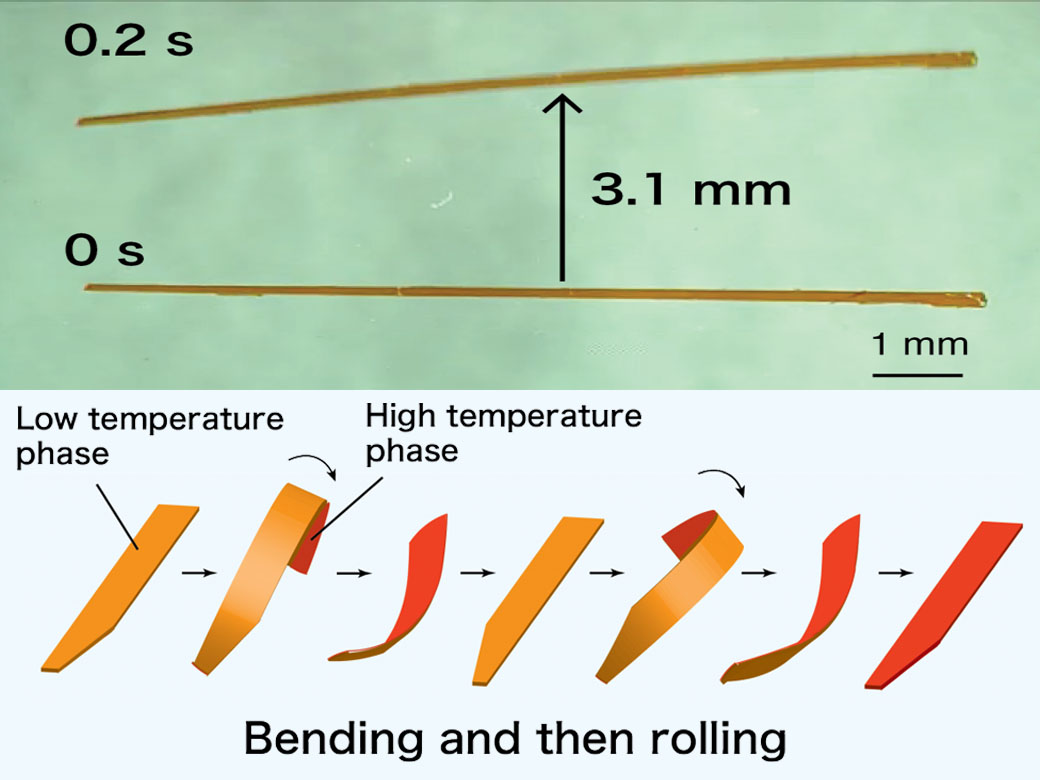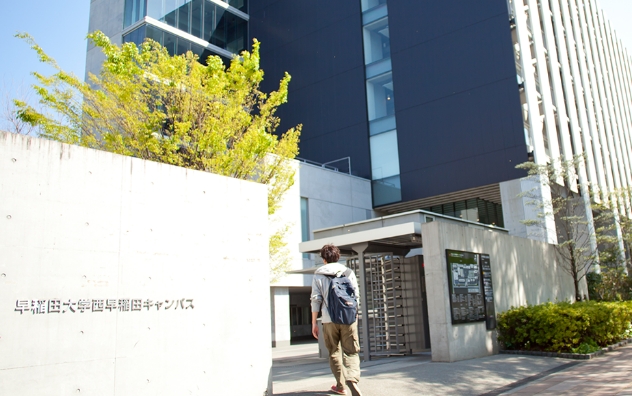Robotic crystals that walk n’ roll
Fri, Feb 16, 2018-
Tags
Great potential as soft robotic material of the future

Scientists at Waseda University may have come a step closer to innovating soft robots to care for people. Its material, however, is something you may have never expected.
They have developed robotic crystals that walk slowly like an inchworm and roll 20,000 times faster than its walking speed. These autonomously moving, organic crystals have great potential as material for soft robots in the future, especially in the medical field.
“The crystals are flexible, durable and lightweight,” says Hideko Koshima, a visiting professor at Waseda’s Research Organization for Nano & Life Innovation. “They could possibly be used as material for microrobots which transport substances in the microscopic region, for instance, carrying egg cells for infertility treatment or conducting invasive surgery.”
Their study was published in Nature Communications on February 7, 2018.
Crystals have been expected to play an important role as locomotive material for soft robots, and its mechanical motion has been explored in terms of bending and expansion/contraction. However, more variety in movements was sought for.
Previously in 2016, Koshima’s research group reported that chiral azobenzene crystals, which were also used in the recent study, bend with exposure to light. During this investigation, the crystals were found to undergo phase transition at 145°C without fracturing, even after repeated heating and cooling.
Based on these findings, they designed the robotic crystals demonstrating two different modes of locomotion: walking and rolling.
Using an infrared thermography camera and a digital optical microscope, the group observed that thin, long plate-like crystals with thickness gradient in the longitudinal direction walked slowly like an inchworm through repeated bending and straightening under heating and cooling cycles near the transition temperature on a hot plate, moving 1.5mm in 30 minutes. On the other hand, thinner, longer plate-like crystals with width gradient rolled 3.1mm in 0.2 seconds, accelerated by tilted bending then flipping, under only one process of heating and cooling.

“The driving force behind the walking and rolling locomotion was generated from the unsymmetrical shape of the crystals,” Koshima explains.
Although the scientists would need to further study how to precisely control the direction and speed of the robotic crystals for practical application, this finding opens a door to a new field of crystal robotics, and on a larger scale, brings us a step closer to addressing issues related to population aging.
“Currently, robots are rigid and heavy, making them unsuitable for daily interaction with humans,” points out Koshima. “Our crystals could be used as a new kind of material for soft robots with improved safety and comfort. As our society ages, we must consider the symbiotic relationship between humans and robots, since robots may look after people, including the elderly, in the near future.”
Koshima is now attempting to produce robotic crystals which undergo phase transition at a much lower temperature.
About the article
- Walking and rolling of crystals induced thermally by phase transition
- Published in Nature Communications on February 7, 2018
- Authors: Takuya Taniguchi, Haruki Sugiyama, Hidehiro Uekusa, Motoo Shiro, Toru Asahi and Hideko Koshima*
*Corresponding author e-mail: [email protected] - DOI: 10.1038/s41467-017-02549-2














